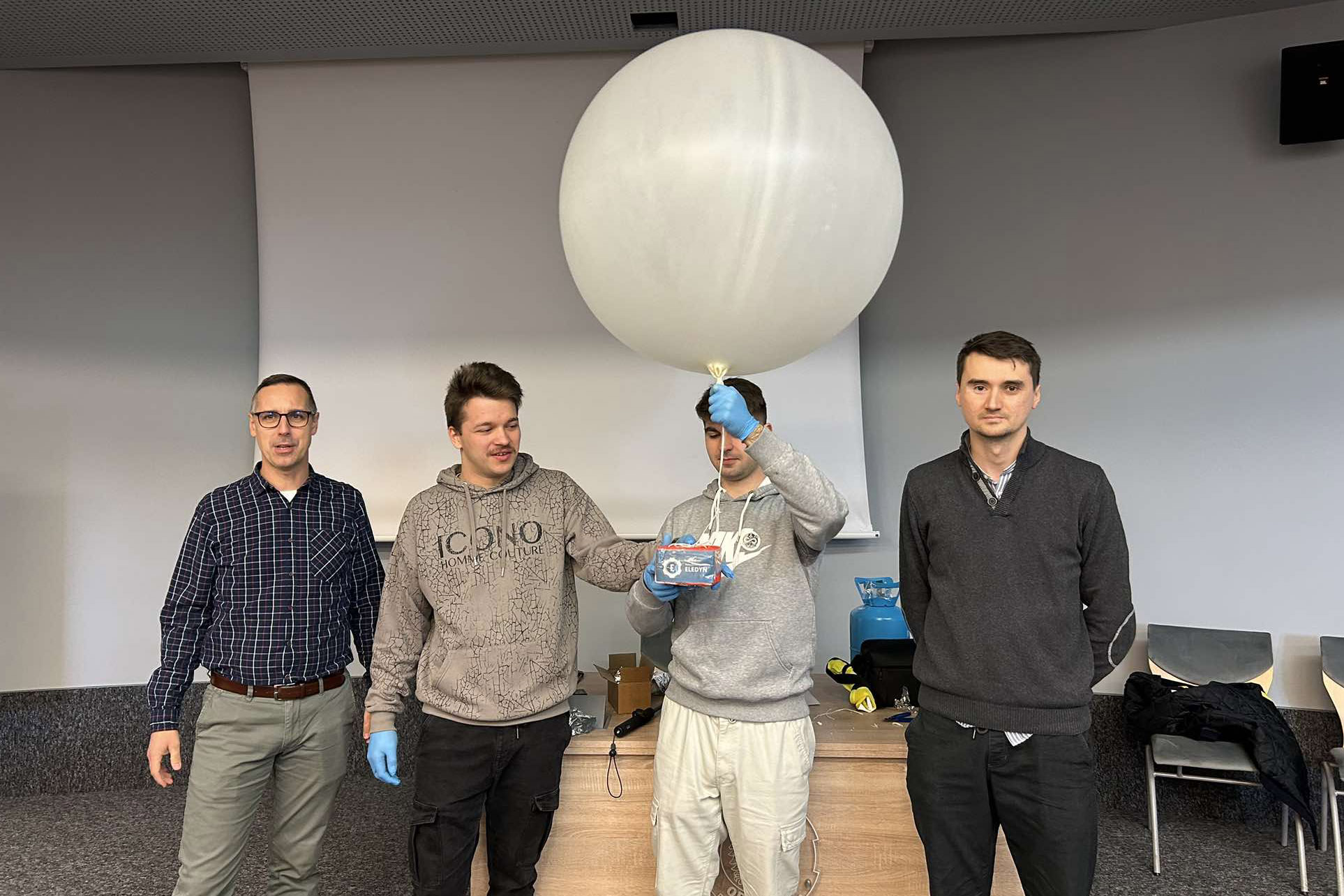Students prepare for another stratospheric balloon mission

The first mission was a success—it enabled the collection and analysis of key data for the project. Now, students from the Eledyn Scientific Club are preparing for another balloon launch, implementing numerous improvements to further enhance the mission’s effectiveness in the stratosphere.
“The goal of the project is to test our proprietary technology for tracking such objects and to gain experience in carrying out advanced research projects. A key element is developing firmware for a microcontroller that enables communication with the APRS network. This allows data transmitted from the balloon to be collected in a database and tracked on a website. Additionally, we plan to test components of other devices, such as Unmanned Aerial Vehicles (UAVs) or rockets, in these conditions. During the first mission, conducted as part of the 4th Festival of Scientific Clubs at Opole University of Technology, the balloon traveled 103 km and reached an altitude of 9 km,” says Patryk Szywalski from the Department of Electrical Engineering and Mechatronics at the Faculty of Electrical Engineering, Automatic Control and Informatics.
“An essential part of the entire project was obtaining all necessary flight permits, including those from the Polish Air Navigation Services Agency (PAŻP) and nearby airports. I handled all legal formalities, submitting the flight to the relevant authorities to ensure full compliance with regulations. I also created a website for tracking the balloon, which we presented during the Festival of Scientific Clubs. Thanks to this, every participant could monitor the flight’s route and progress in real-time,” explains Adrian Drost from the Eledyn Scientific Club.
“Before the upcoming flights scheduled for spring, we have improved the transmission module and upgraded the measurement system by replacing sensors with newer and more precise ones. The entire project has also been enhanced to withstand extreme conditions. The next mission’s goal will not only be to evaluate the overall system performance but also to test the behavior of battery cells and assess the efficiency of mini photovoltaic panels,” lists Paweł Fortuna from the Eledyn Scientific Club.
“Such experiments are highly demanding. The stratosphere, where the balloon operates, presents extremely harsh conditions. In its upper layers, the temperature drops to around -60°C, and atmospheric pressure is significantly lower than at Earth’s surface—only a few percent of ground-level values. The air is much thinner, affecting the aerodynamics of objects and the performance of electronic systems. Additionally, exposure to UV radiation and the lack of protection from wind and turbulence mean that the balloon’s structure and electronics must be adequately secured against extreme conditions. Maintaining reliable communication at high altitudes is also challenging due to atmospheric interference. All these factors required the team to demonstrate great creativity and dedication,” emphasizes Patryk Szywalski.